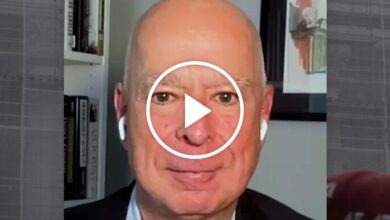
Are you better off than you would have been 14 years ago? If you’re one of the millions of Americans who have a preexisting medical condition and don’t have a job that comes with health benefits, the answer is, overwhelmingly, yes.
Why? Because before the Affordable Care Act, a.k.a. Obamacare — signed into law on March 23, 2010, although many of its provisions didn’t kick in until 2014 — you probably wouldn’t have been able to get health insurance. Today you can, thanks to provisions in the law that prevent insurers from discriminating based on medical history and that subsidize insurance premiums for many Americans. (These subsidies also provide healthy people with an incentive to purchase insurance, improving the risk pool.)
And President Biden strengthened the program, notably by extending provisions eliminating the “cliff” that cut off subsides for many middle-class Americans.
But in the near future, you may well lose that hard-won access. In 2017, Donald Trump and Republicans in Congress tried to eviscerate the A.C.A. and almost succeeded in passing a bill that the Congressional Budget Office estimated would have left 22 million more Americans uninsured by 2026. There’s every reason to believe that if the G.O.P. wins control of Congress and the White House in November, it will once again try to bring back the bad old days of health coverage. And it will probably succeed, since it failed in 2017 only thanks to a principled stand by John McCain — something unlikely to happen in today’s Republican Party, where slavish obedience to Trump has become almost universal.
Before I get to the politics, let’s talk about what Obamacare has achieved.
During the Obama era, voices on the right made many dire predictions about its effects. They claimed that the law wouldn’t really expand coverage, that it would be a fiscal disaster and a job killer.
None of these predictions came true. The percentage of Americans without health insurance has fallen by almost half since 2010. Federal spending on health programs, far from exploding, has grown much more slowly than forecast. Back in 2010, the budget office expected outlays on major mandatory health programs to reach 10 percent of G.D.P. by the mid 2030s and “continue to increase thereafter”; it now expects that number to be less than 7 percent. As for jobs, the employment rate among Americans in their prime working years is at its highest level in more than two decades.
And Obamacare, initially a political liability for Democrats, is now quite popular. Indeed, the narrowly failed Republican attempt to gut the law probably played a large role in Democratic success in the 2018 midterm elections.
So why is this success story in grave danger?
First, it’s important to remember that Trump, aside from his venomous attitude toward immigrants and his protectionist instincts, has shown that he neither knows nor cares much about the details of policy. Last week, he posted a screed about how an “INVASION” of migrants is “KILLING SOCIAL SECURITY AND MEDICARE,” which is both the opposite of the truth and a demonstration that he has little idea how even the biggest, most important government programs work.
When he was in office, Trump was putty in the hands of right-wing economic ideologues, who actually know how to write legislation that serves their objectives; practically his only major budgetary initiatives were a tax cut for the wealthy and corporations, which passed, and the attempted gutting of Obamacare, which fell just short.
And what we know is that even though Trump likes to portray himself as a populist, right-wing economic ideology still rules among congressional Republicans, who are as eager as ever to effectively destroy Obamacare. Last week, the Republican Study Committee, which includes a majority of G.O.P. members of the House of Representatives, released a budget proposal that teed up many of the 2017 “reforms” that would have caused millions of Americans to lose health coverage. (It also called for down-the-road cuts in Social Security and Medicare.)
What I found striking about the budget proposal was how its authors deal with the fact that none of the dire predictions right-wingers made about Obamacare have come true. The answer is that they simply pretend that the bad things they predicted, which didn’t happen, did. I was struck, for example, by the assertion that Obamacare “dramatically escalated the unsustainable rise in American health care spending.” Indeed, in 2010, total U.S. health care spending was 17.2 percent of G.D.P. By 2022 that number had risen to … 17.3 percent of G.D.P.
So the reality of Obamacare’s success won’t deter Republicans who want to destroy it. If anything, the law’s success only increases their determination to kill it, because it shows that, contrary to their ideology, government actually can make Americans’ lives better.
And Trump will go along — he’ll egg them on — because making Americans’ lives better isn’t his primary objective.
Ultimately, right-wingers would like to rip up America’s whole safety net. But they’ll probably start with Obamacare; if they sweep this year, I won’t be surprised if the program is effectively gone by 2026.
Source link




